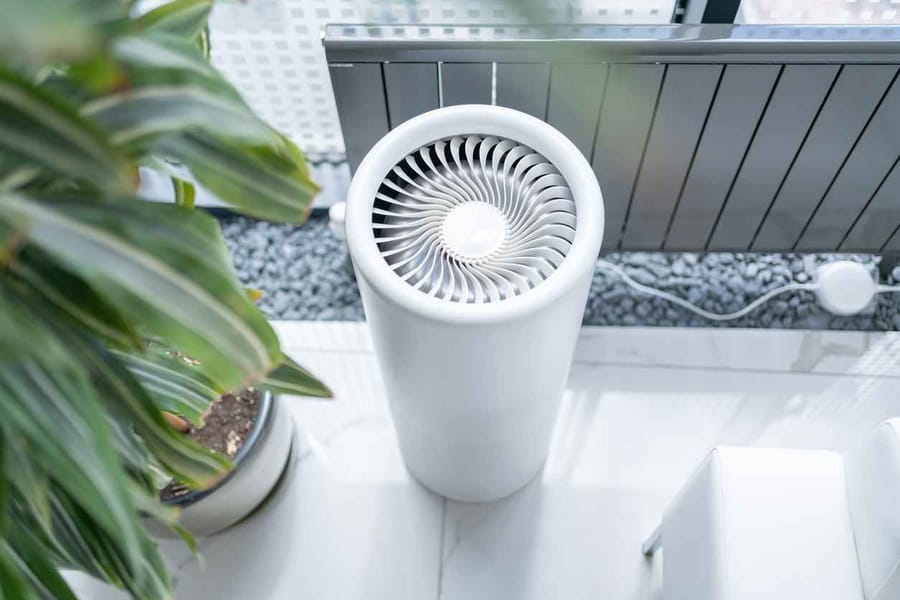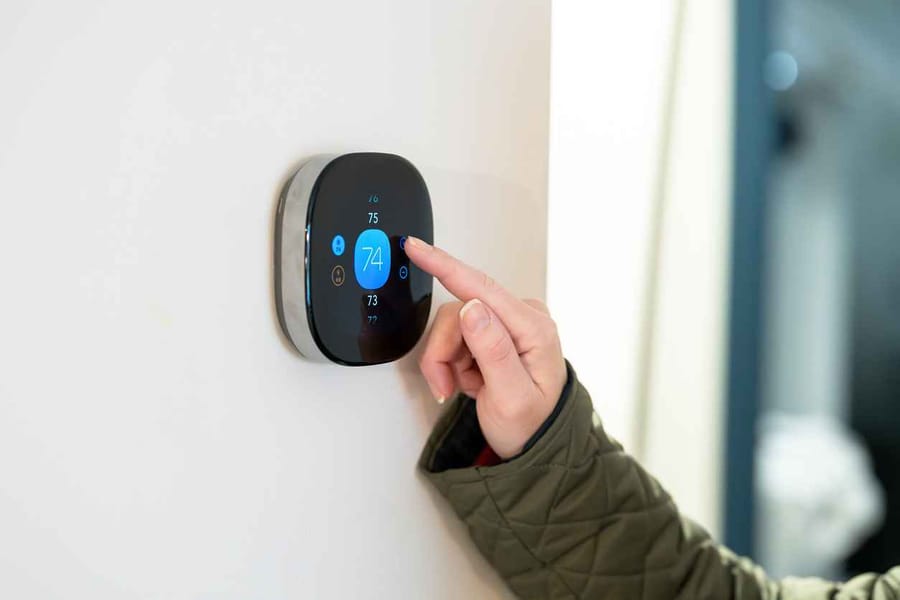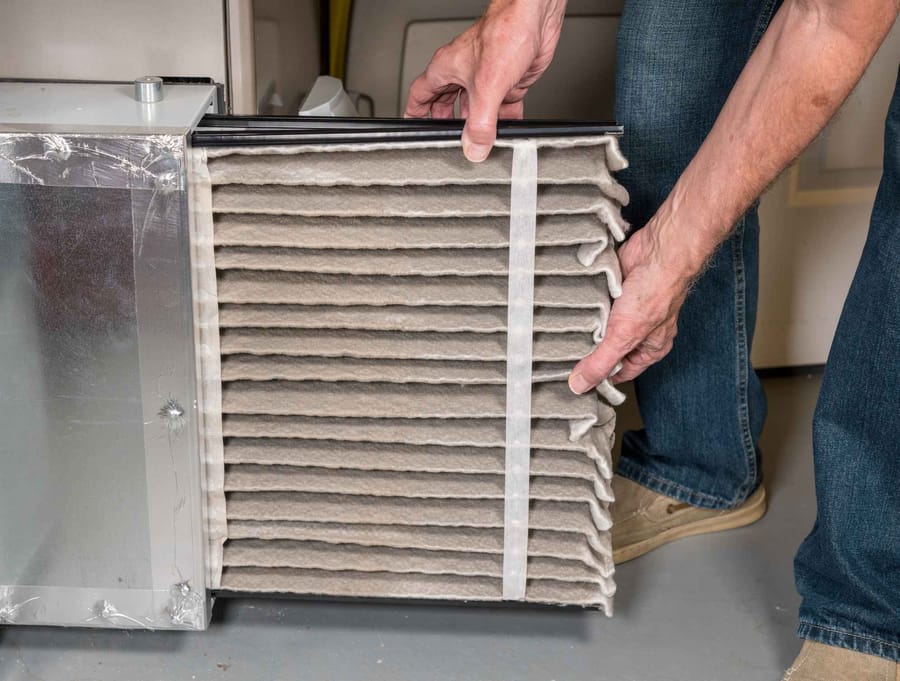4.9 Google Rating
Air Quality Essentials: The Homeowner’s Handbook to Cleaner, Healthier Indoor Air

You might not see it, but the air inside your home could be silently affecting your health every day. From dust and pet dander to mold and household chemicals, indoor air can harbor pollutants that build up over time. For Dallas‑Fort Worth homeowners, the challenge is even greater—high pollen counts, dry spells, and long seasons of closed windows all contribute to stagnant, contaminated air. Left unaddressed, poor indoor air quality can trigger allergy symptoms, aggravate asthma, and reduce overall well-being.
Fortunately, improving the air you breathe at home is both possible and practical. In this blog, we’ll explore the signs of poor air quality, what causes it, and the steps you can take—DIY or with professional help—to create a cleaner, healthier home environment.
Why Indoor Air Quality Matters in Dallas‑Fort Worth
Indoor air quality (IAQ) refers to the cleanliness, freshness, and safety of the air within your home. While it might seem like an invisible issue, the air you breathe every day has a direct impact on your health, comfort, and even your HVAC system’s performance.
In Dallas‑Fort Worth, IAQ challenges are amplified by local conditions. Pollen levels are consistently high during spring and fall, while summer dust and humidity create an ideal environment for mold growth and airborne irritants. Homes that stay tightly sealed to conserve energy can also trap pollutants indoors, allowing them to circulate through your HVAC system repeatedly.
Poor indoor air quality doesn’t just lead to sneezing or coughing—it can contribute to chronic fatigue, poor sleep, sinus problems, and worsening respiratory conditions like asthma. Even if you don’t notice symptoms immediately, prolonged exposure can take a toll on your overall well-being.
Your HVAC system plays a significant role in managing IAQ. Without proper maintenance, air filters can clog, ducts can accumulate dust and mold, and contaminants can be redistributed throughout your home. That’s why understanding—and actively managing—your indoor air is essential for healthier living in North Texas.
Signs Your Home’s Air Quality May Be Poor
Many homeowners don’t realize there’s a problem with their indoor air until symptoms start to show—either in how they feel or in changes around the house. Knowing what to look for can help you take action before the issue worsens. Poor indoor air quality often develops gradually, but its effects can be felt daily.
Common Symptoms in Occupants
If you or your family are experiencing these symptoms consistently while at home, your air quality may be to blame:
-
Persistent sneezing, coughing, or sinus congestion
-
Itchy, watery eyes or irritated throat
-
Frequent headaches or dizziness, especially indoors
-
Worsening asthma or allergy symptoms
-
Difficulty sleeping or waking up feeling groggy
These symptoms often improve when you leave the house, which is a strong indicator the issue lies within your indoor environment.
Signs Within the Home
Aside from physical symptoms, your home itself may show signs that the air inside isn’t as clean as it should be:
-
A noticeable layer of dust on furniture or vents, even after cleaning
-
Musty or stale odors that linger
-
Visible mold or mildew in bathrooms, basements, or around HVAC vents
-
Condensation on windows, especially during cooler months
-
HVAC air filters that appear clogged after only a short period of use
If you’re noticing more than one of these red flags, it’s time to take a closer look at what’s circulating through your home’s air system.
Common Causes of Poor Indoor Air Quality
To effectively improve your home’s indoor air, it’s important to first understand what’s polluting it. Many indoor air problems stem from a combination of contaminants, poor ventilation, and overlooked HVAC issues. In Dallas‑Fort Worth, where homes are often sealed for energy efficiency and weather extremes, these issues can add up quickly.
Airborne Contaminants in the Home
Everyday activities and household items can release a variety of pollutants into your indoor air:
-
Pollen and dust mites enter through windows and on clothing
-
Pet dander accumulates on carpets, furniture, and bedding
-
Mold spores thrive in damp, humid areas like bathrooms or around HVAC units
-
Volatile Organic Compounds (VOCs) are emitted by cleaning supplies, air fresheners, paints, and new furniture
-
Smoke and cooking fumes contribute to lingering odors and fine particulate matter
These contaminants often go unnoticed but can impact respiratory health and overall air freshness.
Poor Ventilation and HVAC Issues
Your HVAC system plays a central role in air circulation and filtration. When it’s not maintained properly, it can become a source of indoor pollution:
-
Limited fresh air exchange allows pollutants to build up inside
-
Dirty ductwork can harbor dust, mold, and bacteria that get redistributed into the air
-
Ineffective or old air filters fail to capture fine particles and allergens
-
Infrequent HVAC maintenance reduces efficiency and increases pollutant buildup over time
Addressing these underlying causes is the first step to creating a cleaner, healthier indoor environment.
How to Improve Indoor Air Quality in Your Home
Whether you’re experiencing symptoms of poor air quality or simply want to breathe easier, there are several effective steps you can take to make your home healthier. From quick DIY fixes to professional solutions, improving indoor air quality doesn’t have to be complicated—especially with the right strategy for your household.
DIY Solutions for Cleaner Air
There are many small changes homeowners can make right away to reduce airborne pollutants:
-
Change HVAC filters regularly: Aim for every 1–3 months, especially during heavy-use seasons.
-
Vacuum with a HEPA filter: This helps trap smaller particles that regular vacuums may recirculate.
-
Use exhaust fans: Run them while cooking or showering to reduce moisture and pollutants.
-
Let fresh air in when possible: On mild-weather days, open windows to boost ventilation.
-
Choose low-VOC products: Opt for low-emission cleaners, paints, and furnishings.
-
Add indoor plants: Certain plants like peace lilies and snake plants can help naturally purify air.
While these actions won’t eliminate all contaminants, they provide a solid foundation for healthier indoor air.
Professional Services to Consider
Sometimes, improving your air quality requires expert evaluation and long-term solutions:
-
Air duct cleaning: Removes dust, mold, and debris from ductwork that can circulate pollutants.
-
Whole-home air purifiers: These systems work with your HVAC to filter out allergens and particulates.
-
Humidity control systems: Dehumidifiers and humidifiers can help maintain ideal indoor humidity levels.
-
HVAC tune-ups and upgrades: Ensure your system is running efficiently and filtering air properly.
-
Indoor air quality testing: Identify specific contaminants in your home to target your improvement strategy.
A combination of proactive DIY care and professional services offers the best results—especially in a region like Dallas‑Fort Worth, where indoor air quality can fluctuate with the seasons.
Preventive Tips for Maintaining Healthier Indoor Air
Improving your indoor air quality is a great start—but keeping it that way requires ongoing attention. With a few simple habits and seasonal check-ins, you can maintain a healthier environment for your family and reduce exposure to indoor pollutants over time.
-
Stick to a regular HVAC maintenance schedule: Have your system professionally inspected and serviced at least twice a year to ensure optimal performance and clean airflow.
-
Seal duct leaks: Leaky ducts can draw in dust and contaminants from attics or crawl spaces and redistribute them throughout your home.
-
Monitor and control indoor humidity: Aim for a range between 30%–50% to discourage mold growth and dust mites.
-
Avoid burning indoors: Skip candles, incense, and wood-burning fireplaces, which release fine particulates and smoke into your air.
-
Wash fabrics frequently: Clean bedding, curtains, and pet bedding to reduce allergens like dust and dander.
-
Use portable air purifiers: Place them in bedrooms or high-traffic areas for extra protection where you need it most.
By building these habits into your routine, you can stay ahead of common air quality issues and support your family’s respiratory health year-round.
Breathe Better With Cleaner Indoor Air
Indoor air quality plays a major role in how your home feels—and how you feel inside it. From controlling allergies and asthma to simply enjoying a fresher, more comfortable environment, the benefits of cleaner air can’t be overstated. Especially in Dallas‑Fort Worth, where weather patterns often keep homes closed up for months at a time, improving your indoor air is one of the smartest steps you can take for your health and comfort.
Thankfully, small changes like upgrading filters, using low-VOC products, and running exhaust fans go a long way. And when you’re ready to take your air quality to the next level, professional services like air purifiers, duct cleaning, and system tune-ups can make a big impact.
If you’re concerned about the air your family is breathing, don’t wait. Contact Moss Heating & Cooling today to schedule a full indoor air quality assessment and discover customized solutions for a cleaner, healthier home.
Recent News

DFW Energy Saver Tips for Your Heating System

Why Is My Heater Blowing Cold Air? Dallas Homeowner Troubleshooting Guide
